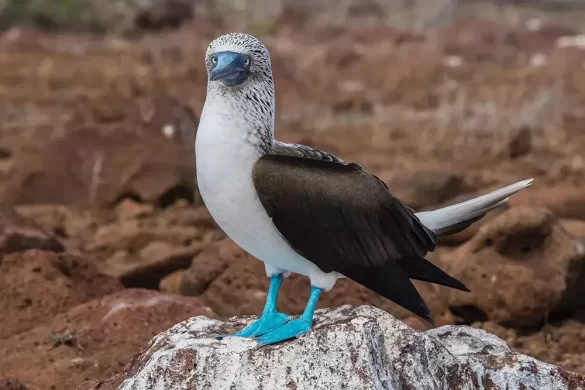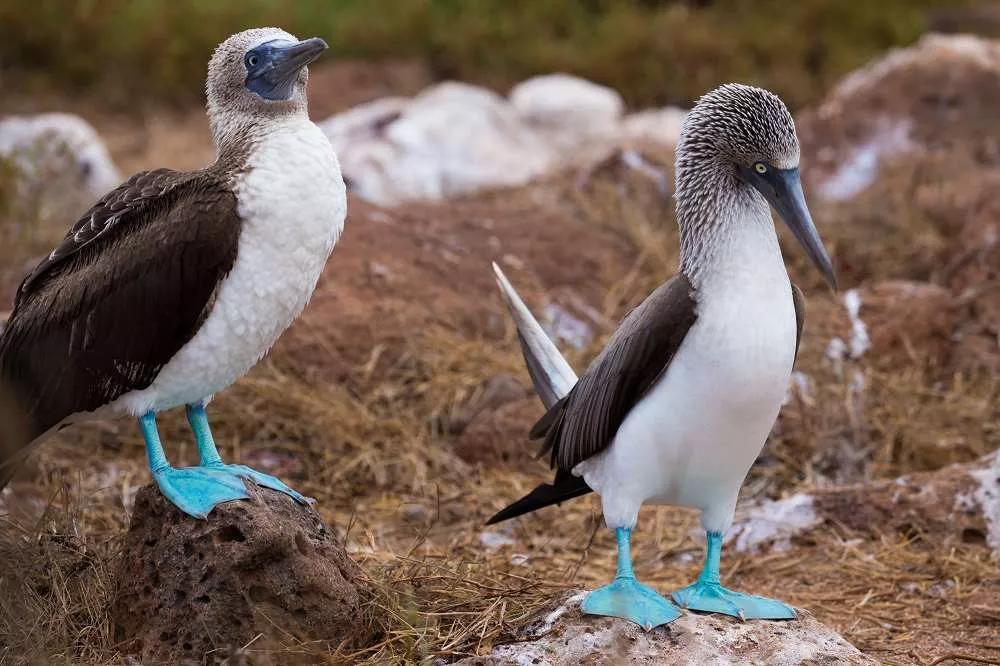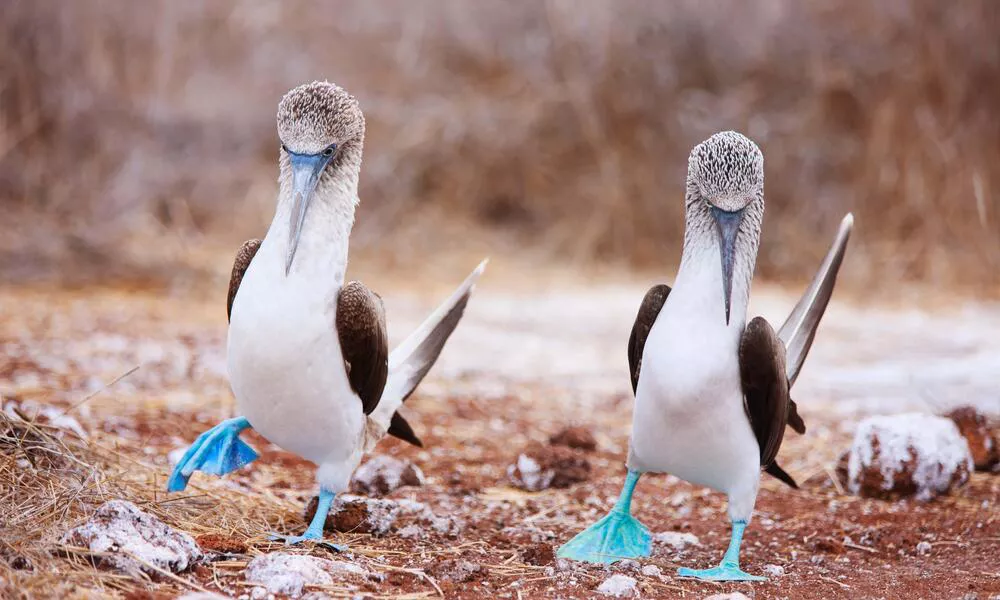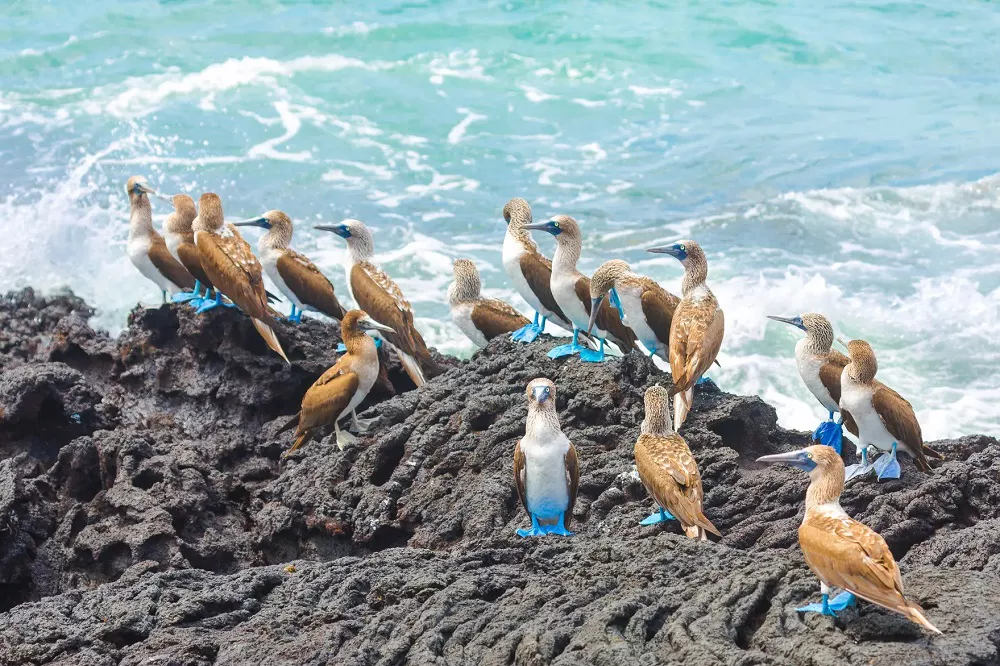The blue-footed booby is one of the most recognizable birds in the world. With its bright blue feet, quirky dance moves, and curious nature, it captures the hearts of scientists and bird lovers alike. Despite their popularity, many people wonder if these birds are extinct, especially since sightings are not as common as before in some regions.
In this article, we will explore the current status of the blue-footed booby. We will look at where they live, what threats they face, and whether their population is growing or shrinking.
What Is a Blue-Footed Booby?
The blue-footed booby (scientific name: Sula nebouxii) is a seabird that lives along the Pacific coasts of Central and South America. It is best known for its bright blue feet, which are used during mating rituals to attract a partner. Males show off their feet by doing a special dance, lifting each foot slowly and proudly.
These birds are part of the booby family, which includes other species like the red-footed booby and the masked booby. They feed mostly on fish and dive headfirst into the ocean to catch their prey. Their bodies are built for this, with long wings and streamlined shapes.
Where Do Blue-Footed Boobies Live?
Blue-footed boobies are mainly found along the coasts of Ecuador, Peru, and the famous Galápagos Islands. The Galápagos is a key home for these birds. In fact, about half of all blue-footed boobies live there.
They prefer dry, rocky islands and coastal cliffs. These places give them space to nest and easy access to the ocean for hunting. Unlike many birds, they don’t build fancy nests. Instead, they lay their eggs on bare ground.
Are Blue-Footed Boobies Extinct?
The quick answer is no, blue-footed boobies are not extinct. According to the International Union for Conservation of Nature (IUCN), they are currently classified as a species of Least Concern, meaning they are not at immediate risk of extinction globally. Populations are generally stable or only slowly declining across their wide range along the Pacific coast.
However, certain populations, especially on the Galápagos Islands, have experienced significant declines. Studies show that in less than 20 years, the blue-footed booby population there dropped by more than 50%, alarming researchers and conservationists.
Why Are Blue-Footed Boobies Declining in Some Areas?
The main reasons for the decline of blue-footed boobies on the Galápagos Islands and similar habitats revolve around food scarcity, breeding difficulties, and environmental changes:
1. Food Scarcity
Blue-footed boobies rely heavily on small fish like sardines and clupeid fish. In recent years, these fish populations have decreased drastically, possibly due to overfishing and changes in ocean temperature caused by climate change. Without enough food, adult boobies struggle to feed themselves and their chicks, which reduces breeding success and chick survival.
2. Breeding Problems
Research has found that adult boobies in the Galápagos may not be breeding effectively. Male boobies sometimes fail to care for all eggs or chicks, particularly if they assess the female’s eggs as less viable based on certain cues like egg size. This limits the number of young birds entering the population and replaces dying adults less effectively.
3. Habitat and Environmental Issues
Human activity, including tourism and pollution, can impact blue-footed booby habitats. Additionally, changes in the marine ecosystem caused by factors such as invasive species, plastic pollution, and shifting ocean conditions create challenges for these birds to thrive.
Why Does It Matter If Blue-Footed Boobies Decline?
Blue-footed boobies are an important part of the marine ecosystem. They help maintain the balance by controlling fish populations and supporting the food web. Their guano (bird droppings) enriches island soils, which benefits plant life and other animals. A decline in their numbers could have cascading effects on the ecosystem health of places like the Galápagos Islands.
Besides their ecological role, blue-footed boobies are a key attraction for ecotourism, bringing visitors interested in seeing these colorful birds in their natural environment. Their decline could impact local economies that depend on nature tourism.
What Is Being Done to Protect Blue-Footed Boobies?
Conservation efforts are focused on protecting important breeding habitats, establishing marine protected areas, and managing fish stocks to ensure blue-footed boobies have enough food. Scientific research is ongoing to better understand the causes behind breeding issues and population decline.
Specific actions include:
- Enforcing fishing regulations around the Galápagos Islands to protect sardine populations.
- Limiting tourism impacts to reduce habitat disturbance.
- Promoting pollution control and removal of invasive species.
- Funding scientific studies on how climate change affects these birds.
- Raising public awareness and engaging local communities in conservation.
Interesting Facts About Blue-Footed Boobies
To better understand why these birds are so special, here are a few fun facts:
1. The brighter the blue feet, the healthier the bird. Bright feet help males attract mates.
2. They can dive from over 80 feet (25 meters) high to catch fish.
3. Both parents take turns caring for the eggs and chicks.
4. The word “booby” comes from the Spanish word bobo, which means fool or clown. Early sailors thought the birds were clumsy and easy to catch.
5. They often live in colonies, sometimes with hundreds of birds nesting close together.
In conclusion, blue-footed boobies are not extinct, but certain populations are declining due to complex challenges. With continued conservation efforts and awareness, there is hope that these iconic birds will continue to thrive and enchant future generations.





 Facebook
Facebook  Instagram
Instagram  Youtube
Youtube 